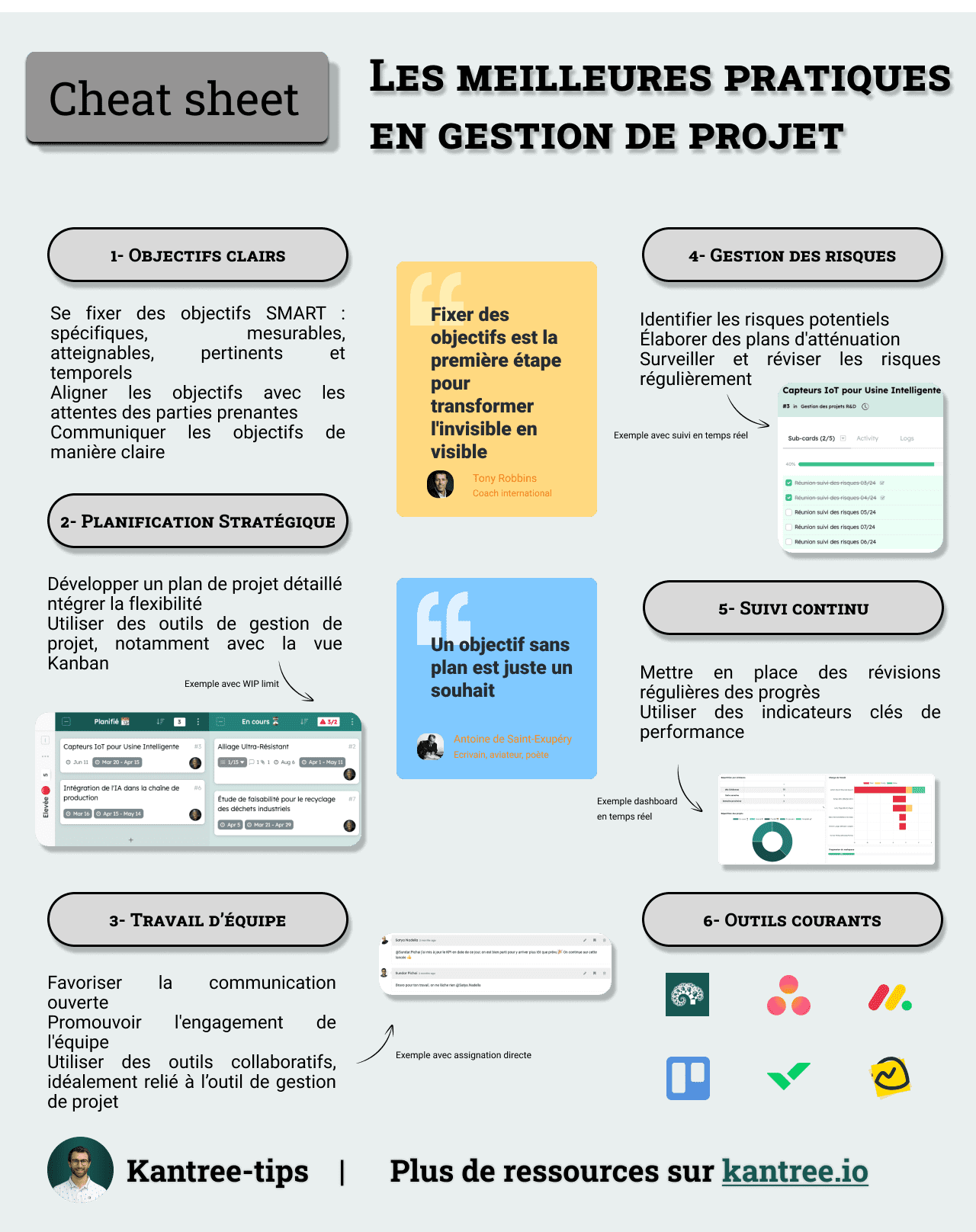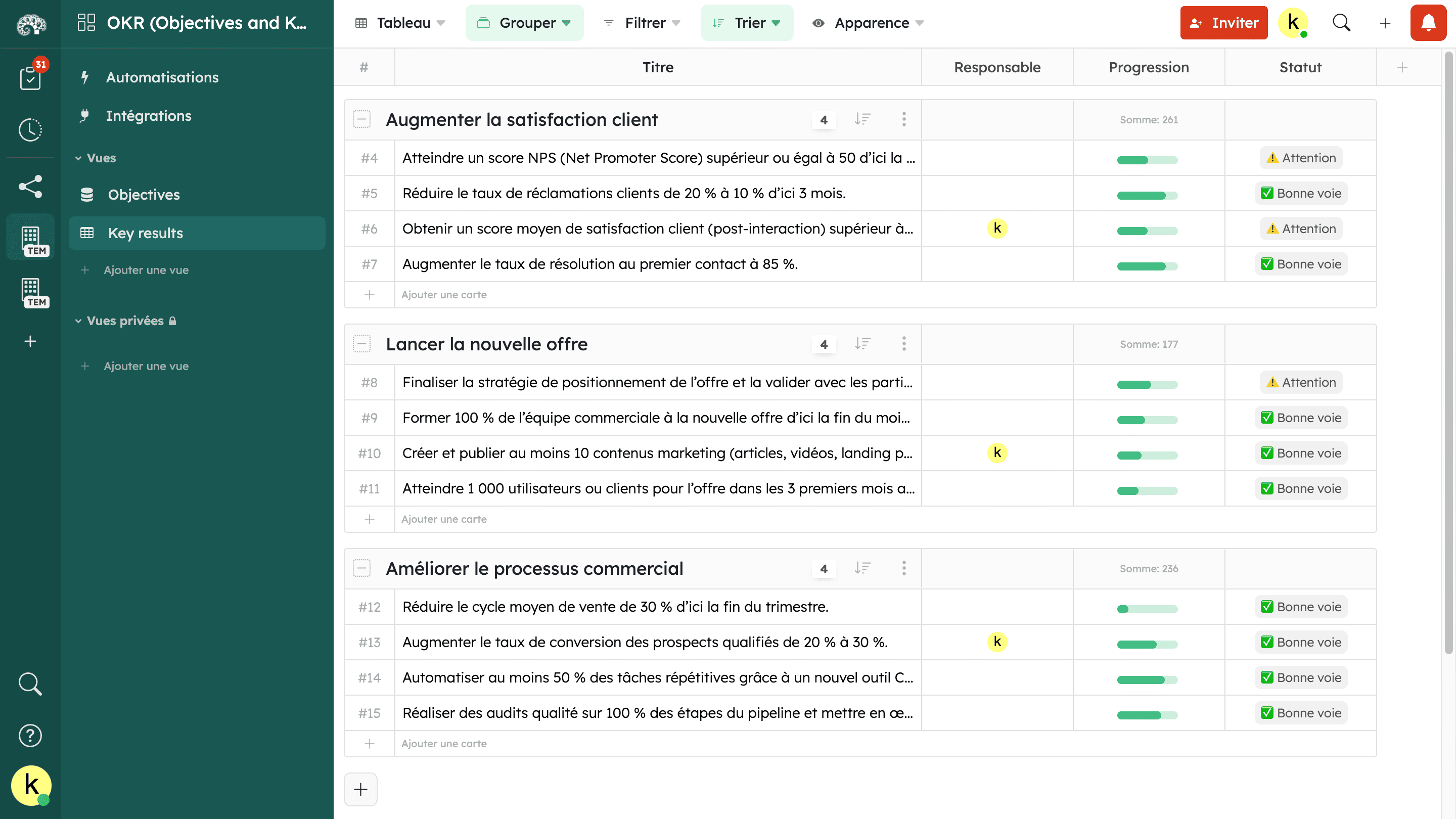OKRs, An Effective Method to Maximize Collaborative Performance
In today’s competitive ecosystem, businesses are constantly seeking effective methods to align their teams, accelerate growth, and maximize potential. OKRs (Objectives and Key Results), a revolutionary project management system, emerge as a particularly powerful solution to these strategic challenges.
Our OKR model is available by clicking the image below 👇
For quick access to the desired sections, click the links below:
- Understanding OKRs
- Why Are OKRs Essential?
- Effective Implementation of OKRs
- Challenges and Precautions
- Conclusion
Understanding OKRs: A Modern Approach to Performance
OKRs represent a management methodology that allows clear, transparent, and measurable definition and tracking of objectives. Unlike traditional performance indicators (KPIs), OKRs provide a more dynamic and collaborative perspective on organizational performance.
Anatomy of OKRs
An OKR consists of two fundamental elements:
- The Objective: a qualitative, ambitious, and inspiring statement that defines what the company or team aims to accomplish.
- The Key Results: quantitative and measurable indicators that track progress toward the objective.
These key results should be:
- Specific
- Measurable
- Achievable
- Relevant
- Time-bound
Presentation of our OKR Model in Kantree (french)
Why Are OKRs Essential for Businesses?
Strategic Alignment
OKRs create a direct connection between the overall strategic vision and the day-to-day actions of teams. By making objectives transparent and accessible to everyone, they foster a unified understanding of organizational priorities.
Productivity Gains
By clarifying expectations and establishing precise indicators, OKRs enable:
- Increased focus on priority objectives
- Reduced scattered efforts
- Resource optimization
- Accelerated strategic execution
Collective Strength and Engagement
OKRs transform organizational dynamics by:
- Encouraging cross-departmental collaboration
- Creating shared accountability
- Motivating teams around common goals
- Promoting a culture of transparency and open communication
Agility and Adaptability
Unlike traditional planning systems, OKRs are flexible. Typically set on 3 to 4-month cycles, they allow for quick adjustments based on market developments and internal performance.
 Cheatsheet: Best Practices in Project Management (french)
Cheatsheet: Best Practices in Project Management (french)
Effective Implementation of OKRs
Step 1: Define the Strategic Vision
Before creating OKRs, the company must:
- Clarify its long-term vision
- Identify its strategic priorities
- Understand its competitive ecosystem
Step 2: Formulate Objectives
Objectives should be:
- Ambitious yet realistic
- Inspiring
- Aligned with the overall strategy
- Understandable by everyone
Example: “Become the European leader in our sector within 24 months”
Step 3: Develop Key Results
For each objective, define 3 to 5 measurable key results. For example:
- Increase revenue by 30%
- Improve customer satisfaction by 25 points
- Reduce operational costs by 15%
Step 4: Deployment and Monitoring
- Communicate OKRs widely
- Organize regular check-ins
- Measure and adjust continuously
- Celebrate successes and learn from discrepancies
Step 5: Tools and Technology
Use collaborative management platforms that allow:
- Real-time tracking
- Clear progress visualization
- Transparent communication
Challenges and Precautions
Although powerful, OKRs require:
- Full commitment from leadership
- An open company culture
- A gradual approach
- Patience during implementation
Conclusion
OKRs are much more than a simple project management tool. They represent a management philosophy that places alignment, transparency, and performance at the heart of organizational dynamics.
By adopting this methodology with diligence and conviction, companies can unlock their collective potential, adapt quickly to changes, and build sustainable competitive advantages.
The key lies in continuous implementation, constant learning, and the willingness to evolve this approach based on the specific needs of each organization.
In this context, Kantree can support you in implementing these OKRs through our dedicated template. For more information, feel free to try out the solution.
To go further
3 possibilities are available to you if this subject interests you:
-
1
Try Kantree here, it is free and you don’t need any credit card
-
2
If you want to learn more about how Kantree can adapt to your challenges, make an appointment with an expert on your use case.
-
3
Are you willing to join +1500 professionals receiving our advices and news on digitalization, collaboration, productivity? Register to our newsletter here.
If this article was useful to you, consider sharing it. You can do it easily below.
